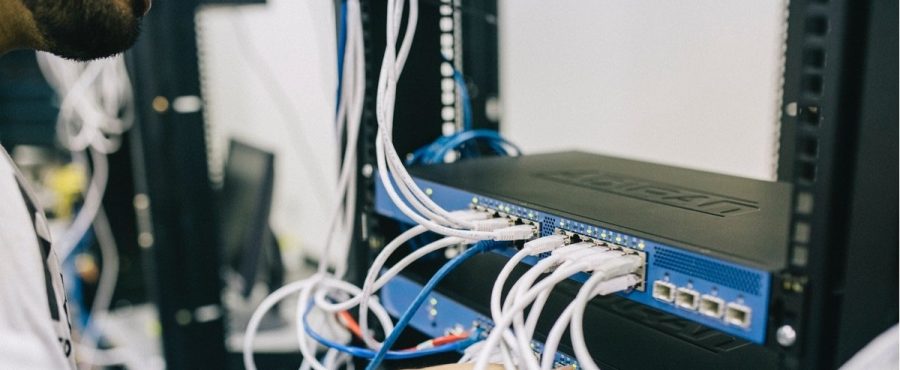A Look into the Different Kinds of Server Rack Options
Which Server Rack Option Is Right for You?
Businesses have transitioned from keeping important documents and work inside filing cabinets to keeping them remotely in high-density data centers so they could take advantage of colocation services. Colocation Data centers are critical for modern businesses because they can efficiently store an incredible amount of information that can be instantly indexed and accessed regardless of where the company is located. Businesses that offer colocation services like Lightwave Networks have plenty of different server rack options available for businesses. However, companies get confused about the different sorts of racks available to them. Below, Lightwave Networks detail the differences between the most important server racks so your business can be more educated on how our colocation servers work.
What To Look For When Buying a Server
The colocation and remote server industries have grown so much in recent years that there is a larger variety available for businesses than ever before. For those that do not already know, servers are essentially shared computers where everyone in your organization could remotely access shared data and resources.
The kind of dedicated server management that your business needs are entirely dependent on the unique needs of your business and its size. For example, a smaller business that requires that all of its employees access certain documents may require an IT Server for small business operations. Other things that you should consider when you want the help of IT infrastructure services are the following:
- How much processing capacity you will need
- How much maintenance your server will require
- How critical cyber security is to your business
What Are the Different Kinds of Server Racks?
The purpose of a server rack is to provide structure to the different components of a complex colocation system. This way, these components are organized and easy to fix and maintain if possible. Depending on the complexity and size of your colocation server, you may need to opt for a server rack cabinet, open frame rack, data center cage, or data center suite. No matter the size or capacity of the server that your business will require, you will need a server rack. A Detailed explanation of server rack options are detailed below:
What Is an Open-Frame Server Rack?
An open-frame rack consists of an open-air mounting hoisted by rails. These come in plenty of sizes and could house a wide range of equipment. The industry standard for these is typically 19 inches high by 36 inches deep. These are the smallest kinds of racks available to businesses, but this does not mean that they lack performance. The most popular are the 2-post open frame rack and 4-post open frame rack, with the latter being the most well-equipped for bulkier setups.
Enclosed Server Rack with Cooling
As the name suggests, an enclosed server rack with cooling means that the equipment inside the server rack gets cooled with an internal cooling system rather than the external cooling offered at the IT infrastructure management center.
What Is a Data Cabinet and Data Center Cage?
A data cabinet resembles a large gun safe and comes with doors, side panels, and even adjustable railings. This is a completely enclosed setup, which means that the components inside are entirely secure. However, being completely enclosed also means that the contents inside of them run the risk of overheating, requiring a ventilation or cooling system going forward.
A data center cage is a metal wire enclosure that can store multiple racks and cabinets. For maximum cooling efficiency, cages are typically made up of metal bars and metal mesh walls, and they can either be shared or private. A private cage will only hold servers and IT equipment of one company, while shared cages hold multiple companies’ servers. Colocation providers typically rent out cage space by the square foot instead of by “U” ( which is a rack unit or one slice of rack or cabinet space.)
What Are The Different Server Rack Sizes?
A business interested in different server rack options will want to know a brief breakdown of the different options they’ll have when it comes to sizes. There are three aspects that come into play when considering server rack sizes and server rack options: height, depth, and width.
Server Rack Height
When it comes to server rack height, the standard measurement is 7ft, and the more technical way to classify a server rack with this height is as a “42-U Rack.” The letter “U” in this word stands for rack units or about 17 and a half inches. So, if you come across other kinds of rack titles denominated as a 22 U or 27 U, you should know that this stands for the number of rack units that the server rack has.
Server Rack Depth
Server rack depth is measured in inches and does not come with as many variations in height. The most common amounts of rack depth are 36, 42, and 50 inches.
Server Rack Width
As for the depth of certain server rack options, there are a few variations for the width of a server rack. The most common width for a server rack is 19 inches. That is especially important for stackable server racks because they should be an even distance from one another to function correctly.
About Lightwave Networks
Lightwave Networks not only offers colocation in Dallas, dedicated servers in Philadelphia, and data centers in New Jersey, but they also provide colocation in Massachusetts, online backup for businesses in Boston, and colocation in Boston, along with many other services. To learn more about colocation and how it could be used for your business, contact us today to learn more.
Related Readings
What Is a Hyper-Converged Data Center?
Why You Should Invest in Managed Hosting



